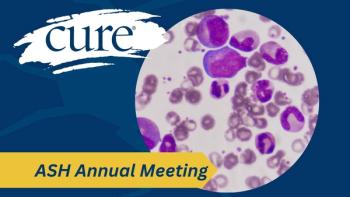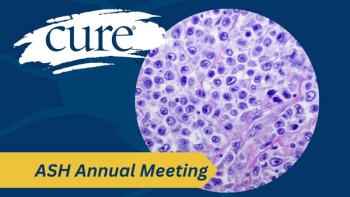
Spotlighting Pancreatic Cancer Disparities in Black Communities
Key Takeaways
- Black Americans have a higher risk of pancreatic cancer, with systemic disparities affecting timely diagnosis and treatment access.
- Community engagement and awareness are essential for improving outcomes, with PanCAN focusing on outreach through Black churches and local groups.
Tripp Razor highlights the disproportionately high pancreatic cancer risk among Black Americans and the systemic disparities they face in access to care.
Although Black Americans face a disproportionately high risk of pancreatic cancer, due to systemic disparities, these individuals often lack timely diagnosis care. The unmet needs experienced by this patient population emphasize the need for increased awareness and community engagement to improve patient outcomes.
To further discuss this topic, CURE sat down for an interview with Tripp Razor, a patient advocate, who discussed what Black patients and families should know their increased risk for pancreatic cancer. He also expanded on topics like barriers to accessing timely diagnosis and treatment, as well as the lack of clinical trial diversity.
Razor volunteers with PanCAN’s (the Pancreatic Cancer Action Network) Raleigh-Durham Affiliate, where he serves as the chair of PurpleStride. He began volunteering after his mother's death from pancreatic cancer in May 2015. Razor also volunteers for agencies focusing on adoption and domestic violence, according to the PanCAN website.
CURE: Why is it especially important to continue spotlighting pancreatic cancer in the Black community, even without federal recognition of Black Family Cancer Awareness Week this year?
Basically, Black Americans have the highest likelihood of pancreatic cancer; we're more prone to it than any other racial group. And when you come from an area like mine, where I grew up, it's rural. I joke and say that everyday life in some North Carolina towns in 2025 is the same as it was in 1990 — they look exactly the same.
So, if the towns look the exact same and haven't grown, then healthcare hasn't grown either. The financial infrastructure may not be there to build more clinics or hospitals, and people may also have a hard time getting to existing hospitals.
What should Black patients and families know about their increased risk for pancreatic cancer? How can they take proactive steps toward early detection?
Right now, the pancreatic cancer survival rate is around 13%, but for Black Americans, it's 11%. As this number continues to grow, we would love for the pancreatic cancer survival rate to be 100% for everyone. However, it affects the Black community differently, which could be due to factors like diet, body type, or a number of other reasons.
Can you talk about some of the barriers Black Americans face in accessing timely diagnosis and treatment for pancreatic cancer?
When I mentioned rural areas, I guess I was referring to factors like the environment, access to nutritious foods, barriers to quality healthcare, and healthcare disparities. For instance, I live in Raleigh now, in what we call the Triangle area, with NC State, Duke, and UNC. There are tons of hospitals here. Plus, Winston-Salem is right down the road, as are Greensboro and Charlotte.
People on this side of North Carolina tend to have more access to hospitals than those on the eastern side of the state. I understand that other states likely face the same issue, where one half of the state may have easy access while the other half doesn't. This is simply due to how states are set up, whether it's because of mountains or rural areas.
How is PanCAN working to ensure Black patients have access to life-saving resources, clinical trials, and personalized care?
I know over the last few years, especially since COVID, there's been a real effort to reach out to Black churches and other Black community groups. The goal is to let them know, 'Hey, I think places like barber shops — where people talk all the time — are important because you might be more comfortable speaking with someone who looks like you, rather than just hearing it in other settings.' If you can get people in Black churches, barber shops, salons, or just wherever they visit to start talking, perhaps the message spreads more effectively and has more value.
Clinical trial diversity remains a major issue. Why is it so important that more Black patients are included in pancreatic cancer research, and how can they get involved?
Despite Black Americans making up only about 14% of the U.S. population, our participation in clinical trials is at a mere 5% to 7% of that population. The more people who participate in clinical trials, the larger the knowledge base, which leads to better detection and more effective ways to treat Black Americans when they have pancreatic cancer.
What message do you have for Black families affected by pancreatic cancer who may feel overlooked or underserved by the healthcare system?
Be an advocate for yourself. We all know our bodies best; if yours is changing or doesn't feel right, go to the doctor. Ask questions and be aware of potential symptoms. If you've been diagnosed with pancreatic cancer, do your research and reach out for support. If you experience symptoms like back or stomach pain, unexplained weight loss, jaundice, or digestive challenges, don't just put it off and assume you'll be okay.
The fact is, no matter your race, people often go to the doctor for pancreatic cancer symptoms and aren't diagnosed until it's already at an advanced stage. So, it's crucial to really advocate for yourself.
What inspired you to become involved in advocacy work for pancreatic cancer, and how has your personal experience shaped your commitment to this cause?
I guess I do this because, as I've heard you say, it means a lot to me too. My mom had pancreatic cancer, and a childhood friend found out she had it on her 39th birthday. It really hits home for me, as it does for a few other friends whose parents passed away much faster than my mom.
My mom was diagnosed in January 2014 and died on May 31, 2015. I have a friend whose dad was diagnosed, I think, on Thanksgiving 2017 and passed away by Christmas 2017. So, really, I do this because I just want to help other people.
Transcript has been edited for clarity and conciseness.
For more news on cancer updates, research and education,





